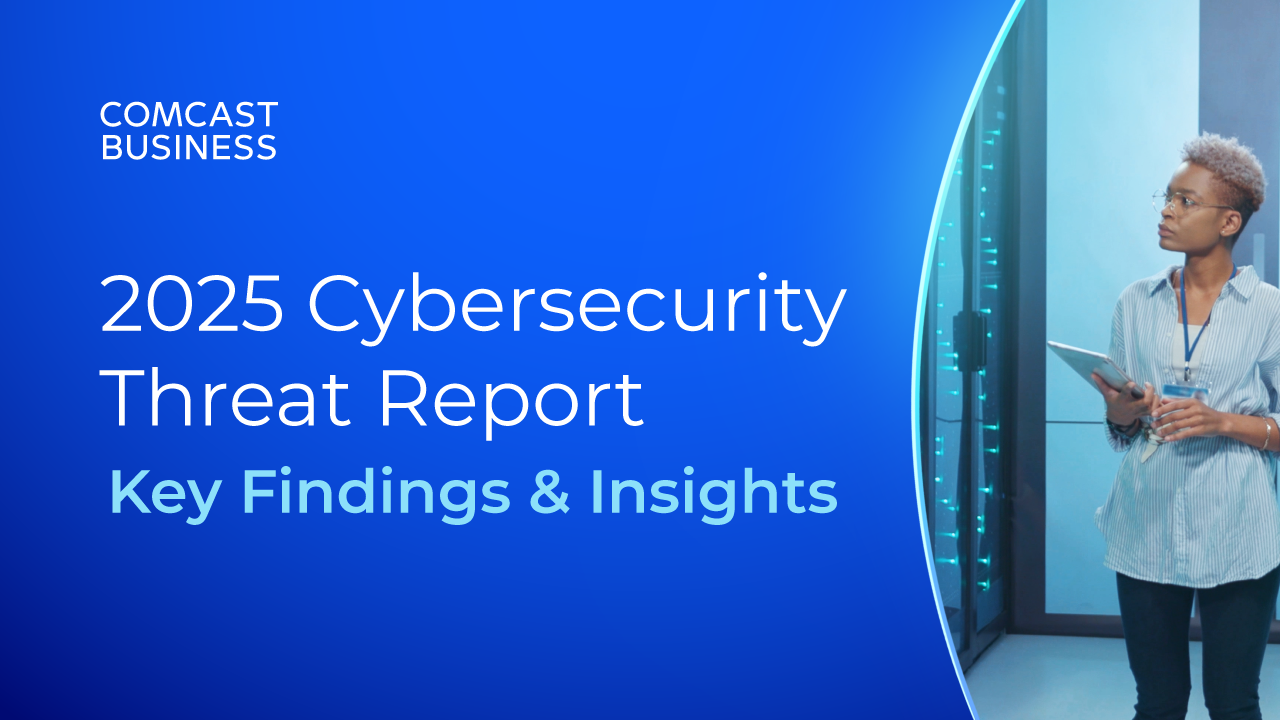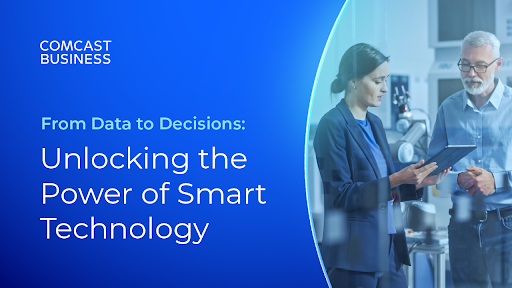Expanding Impact of Generative AI on Enterprise Connectivity Strategies and Road Maps

Questions posed by: Comcast Business
Answers by: Paul Hughes, Research Director, Future Enterprise Connectivity Strategies

How do you see the integration of AI, specifically GenAI, at the network edge creating dynamic, context-rich experiences? How does this align with business goals around data and customer satisfaction?
![]()
Generative AI(GenAI) hype is already profoundly impacting enterprise IT and will soon impact networking strategy and planning. IDC's recurring Future Enterprise Resiliency and Spending Survey,which it conducts regularly throughout the year, shows a significant increase in the impact of GenAI on how enterprises design their connectivity strategy. In late 2023, 25% of enterprises felt that GenAI would have a significant or transformative impact. By mid-2024, that percentage almost doubled to 47%. As GenAI becomes an increasingly important part of the digital business roadmap, IDC data shows that 40% of healthcare organizations and 45% of financial services firms expect that GenAI will impact network and connectivity strategies and target use cases that improve the customer experience. Furthermore, 29% of enterprises are allocating current investments to AI-specific server and storage hardware in on-premises/colocation datacenters and remote edge locations.
As enterprises adopt more bandwidth-heavy services,such as augmented reality and virtual reality, and connect more devices to the network, the demand for resilient connectivity, faster computation, lower latency, and increased use of automation will be critical to delivering rich experiences for customers and employees. Positioning edge servers and datacenters near the point of transmission is already making it easier for organizations to support customers and deliver increased performance to eliminate network congestion and latency.GenAI will have its greatest impact at the network edge in optimizing network security and increasing automation of the network management process, allowing IT and network employees to focus more on strategic business outcome-driven initiatives and less on tactical efforts.

How do you envision enterprise edge computing needs transforming with the integration of GenAI?
![]()
Most data creation within the enterprise happens locally, whether at a branch office,retail location,remote work site, or by remote employees in the field.As more data creation occurs across the enterprise, the demand for increased bandwidth and data management will increase. IDC's August 2024 Future Enterprise Connectivity Survey shows that 29% of enterprises in North America are seeing bandwidth demands increase by more than 50% per year as they create more data onsite and in the cloud. As such, network capabilities must expand to meet that demand.
Leveraging edge computing to manage data collection, manipulation, and aggregation already provides operational and performance benefits for maximizing the value of localized data today. As a result, GenAI can further enhance the business case for edge computing and relevant use cases. GenAI can enrich the customer experience by analyzing large data sets generated from ongoing customer interactions. As multiple elements of physical and digital interaction, as well as voice and data traffic, define the customer experience, the wealth of data must undergo analysis to extract contextual relationships and assess implications on customer expectations. It is possible to train GenAI to align business outcomes with customer expectations, leveraging these large data sets. The edge computing infrastructure is the optimal framework to provide real-time inference of massive data sets to deliver a richer customer experience.
Over the next two to three years, enterprises must align and scale edge computing infrastructure to support the increased workload demands from GenAI use cases, especially those designed to have a real-time impact on efficiency and productivity.With data showing that GenAI may increase computing workloads and data traffic by up to five times, organizations will also see increased usage of data- and bandwidth-intensive applications. This will also increase the demand for faster data manipulation and real-time consumption. Customer-centric applications, such as personalized, voice-assisted support in retail, customer sentiment analysis, and autonomous decision-making applications, will be time sensitive and require low latency to be effective. This is now more viable, as organizations can more easily deploy low cost computing at the edge.
For internal business use cases, such as software code generation and testing or generative product design and knowledge management, the benefits of edge-based computing performance and low latency will also ensure faster outcomes for organizations with localized workforces and teams, requiring enterprises to map edge computing infrastructure to support distributed workload demands. As these and other use cases embrace GenAI and capabilities scale as the language models scale, these revolutionary changes will force enterprises to increase the usage of edge computing to facilitate and optimize business processes.

What are the top network and connectivity areas that enterprises should expect GenAI to impact the most?
![]()
IDC's July 2024 Future Enterprise Resiliency and Spending Survey, Wave 6, data shows that North American enterprises expect GenAI to have the strongest impact on network management automation and employee experiences, with customer experience ranked a close third. The further state of GenAI adoption and maturity in the North American region plays a role in the rankings. In detail:
- 49% expect GenAI to play an impactful role in increasing the automation of network management processes.
- 43% expect GenAI to play an impactful role in helping improve the personalization of employee experiences (e.g., call center activities).
- 38% expect GenAI to help improve the customer experience.
- 36% expect GenAI to accelerate network planning and optimization.
- 34% expect GenAI to help optimize network security.
Changing customer and business demands require the network to be ready to adapt to that change. As networks become more software defined and data driven, the ability to offload daily operations from human to intelligent digital sources allows businesses to align staffing to more outcome-based activities. Here, the enterprise can benefit from GenAI algorithms that leverage a wide source of business data to analyze network operations and limitations, analyze peak traffic pattern times and sources, and help reduce network latency at peak times.
Enterprises will expect AI to play a significant role in driving employee productivity by supporting the integration of unified communications and call center solutions. Businesses can leverage APIs to facilitate AI-driven agent-assist chatbots that use AI-driven natural language processes and cognitive document processes in contact centers to manage simple tasks,such as product status or payments, leaving more complex tasks to human agents.
GenAI is already playing a significant role in improving the customer experience by helping businesses access, consume, and analyze information, which will impact the speed and quality of customer-specific decision-making. It can also improve marketing use cases, enabling brands to accelerate the delivery of personalized content to their target audience. As GenAI accelerates business processes, it also increases the importance of keeping critical data in motion. As such, speed and agility must align with connectivity demands.
Last, network security demands will only grow as threats and attacks become more frequent and potentially more damaging as the network fabric becomes even more mission critical to keep businesses and their data moving. Where GenAI already shows the benefit of learning and replicating patterns in content and text, it will evolve to learn cyberthreat patterns and predict network vulnerabilities. The long-term benefits will be an even more proactive approach to network security.

How should enterprises be rethinking connectivity transformation timelines based on the impact of GenAI?
![]()
Enterprise exploration of GenAI is already well underway. IDC's July 2024 Future Enterprise Resiliency and Spending Survey, Wave 6,showsthat organizations have dedicated 14% of new IT budgets in North America to GenAI initiatives. For those businesses already investing, over one-third are turning to the business units to provide funding for projects that directly impact them, and the eventual expenditure ofGenAI on connectivity programs which is at a very early stage. From a network/connectivity perspective, investments will focus on expanding the capabilities of existing network data intensive,AI-/ML-related functions. Successful outcomes with GenAI in areas such as customer experience and, in particular, the automation of network management will catalyze the expansion of generative AI across the enterprise. The larger the organization, the more of an expected impact the automation will have. However, we expect the road map and timelines for connectivity and edge computing-related projects to accelerate over the next 12–24 months and focus on solving these specific and somewhat tactical issues in the medium term.
For large enterprises, the ability to leverage autonomous network-type functions in which AI or ML models are already in use for network management and optimization will help increase agility. We also expect network managers and IT leaders to use it to gain greater insights into network traffic and aid in long-term network security, capacity planning, and performance.

What strategies would you recommend to optimize IT infrastructure and resources to support the full potential of GenAI?
![]()
First and foremost, businesses must take a holistic look across their data and infrastructure layers;review their current plan for on-premises, cloud, and edge investments; and determine the orchestration needs across these areas. This should provide a foundational framework and plan for the next steps as GenAI becomes more pervasive across the business. The successful integration of GenAI will require careful consideration of security and privacy as well as ongoing monitoring,to ensure that the technology delivers its intended benefits while minimizing risks.
Second, dedicated applications that benefit from GenAImust align with an enterprise's edge computing strategy, thus requiring significant business case development, technology alignment, and outcome expectations.
Third, as businesses look to develop contextual experiences based on edge-enabled, real-time data intelligence, they should consider the integration of GenAI as part of the workflow of edge computing use cases.GenAI will help enable a deeper analysis of the customer experience and relate it to their personal motivations and outcomes, and whether it delivered the service according to customer expectations.
Last, businesses should work with strategic connectivity partners to help address the three GenAI-related areas mentioned previously, and if resources are sparse, consider a managed services agreement with strict SLAs. This reduces the stress on IT and networking teams and allows key resources to focus more on strategic business outcomes and less on tactical fixes or operations.
About the Analyst

Paul Hughes, Research Director, Future Enterprise Connectivity Strategies Paul Hughes is a research director leading IDC's Future Enterprise Connectivity Strategies program. He is also a key member of IDC's larger Worldwide Telecom Research team. In this role, Paul is responsible for research related to the future innovation and transformation of how data and connectivity impact people, things, applications, and processes used by enterprises and end users. Paul brings over 20 years of experience in telecommunications services, software, digital transformation research, product marketing, and strategy to IDC.
Message from Sponsor
Comcast Business: Powering Possibilities
Comcast Business is helping enterprises navigate their digital transformation journeys and prepare for what comes next. Learn more today.
140 Kendrick Street
Building B
Needham, MA 02494, USA
T 508.872.8200
F 508.935.4015
Twitter @IDC
idc-insights-community.com
IDC Custom Solutions
This publication was produced by IDC Custom Solutions. The opinion, analysis, and research results presented herein are drawn from more detailed research and analysis independently conducted and published by IDC, unless specific vendor sponsorship is noted. IDC Custom Solutions makes IDC content available in a wide range of formats for distribution by various companies. A license to distribute IDC content does not imply endorsement of or opinion about the licensee.
External Publication of IDC Information and Data — Any IDC information that is to be used in advertising, press releases, or promotional materials requires prior written approval from the appropriate IDC Vice President or Country Manager. A draft of the proposed document should accompany any such request. IDC reserves the right to deny approval of external usage for any reason.
Copyright 2025 IDC. Reproduction without written permission is completely forbidden.
Explore the ways generative AI is impacting the network edge and what comes next.
Locked Content
Click on the button below to get access
Unlock NowOr sign in to access all content on Comcast Business Community
Resource Center
Learn how Comcast Business can help
keep you ready for what's next.












